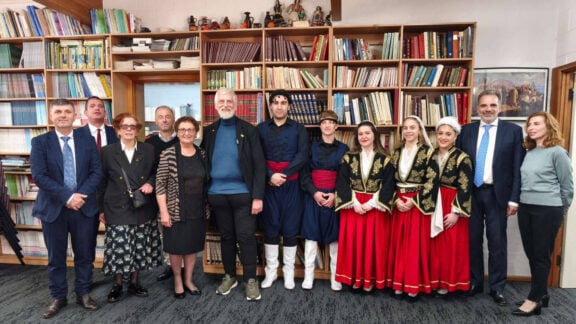If there was ever a food for complete nourishment, it would be legumes. Legumes – known in Greek as ospria – give a feeling of fullness and are rich in proteins.
During the hard times when meat wasn’t plentiful in Greece, beans, lentils and peas were the main staple people had to fall back on for meals.
To this day, they remain the perfect food to replace meat and a great solution for healthy, vegetarian dishes. They are rich in potassium and vitamins A and C, with no fat content at all.
Legumes have always been an integral part of the Greek diet, going all the way back to our spiritual ancestors, the ancient Greeks.
To this day, all legumes – lentils, peas, and beans – make up a large part of the traditional Greek diet. From fava beans (broad beans) to revithia (chickpeas), to yigandes (giant beans) and bizelia (split peas), legumes are used in recipes for everything from appetisers to bread.
I have given you a collection of dishes which are mostly Greek. However, some of the recipes can be found amongst our Balkan neighbours.
Lentil dishes, especially those mixed with rice, can also be found in other culinary cultures such as in Indian and North African cuisine.
When cooking legumes there are some rules that have to be abided by. For perfect results when preparing legume dishes, here are some secrets:
– Clean legumes by removing any pieces that are black – sometimes there are even pebbles. Rinse them well, especially if they are not commercially packed, then soak in clean water for 4 to 12 hours depending on the legume.
– Lentils of all colours, black-eyed beans, small haricot beans and dried peas do not need soaking.
– The main secret in the cooking is to cook on low heat for a length of time so the water does not evaporate quickly. The small haricot beans and the black-eyed beans cook easily and quickly.
– Estimate about 60 grams of legumes per serving, with water proportion 4 to 1, and always keeping in mind the recipe quantities. Either way, the water has to be about four finger measures on top of legumes. Keep it this way during the cooking as much as possible, by cooking on low heat and in a covered saucepan. If necessary, add some hot water.
– The older the legumes are the harder they are to cook so try and buy more recent harvests if possible. Always be aware that legumes vary in hardness depending where they come from. I have found local Australian lentils need longer cooking and the water plays a role as to how easily legumes cook. We know that on the Greek islands rain water is preferable in cooking legumes as the tap water is much heavier.
– Salt hardens the skin of legumes so add it near the end of the cooking. For the same reason we add the acid ingredients, such as tomatoes, tomato paste, lemon juice and vinegar half way through cooking.
– Avoid mixing legumes from different companies, as they will not have the same cooking time. The same applies if a dish has a variety of legumes – they must be cooked separately.
– As some legumes need longer to cook and time is often of the essence, you can soak and part boil them, and store in freezer for future use.









